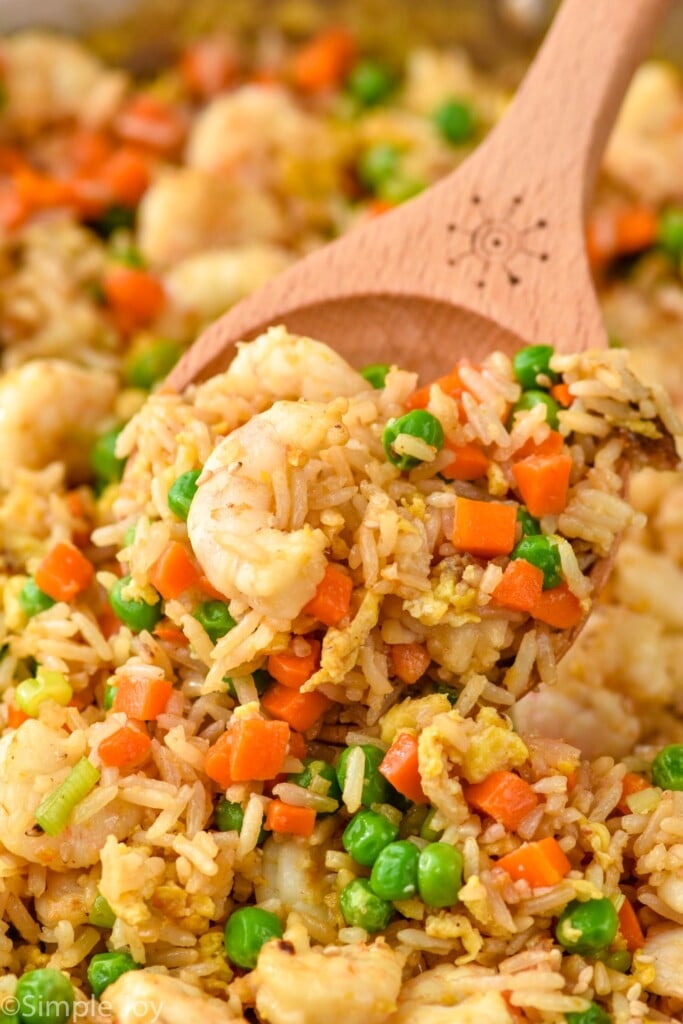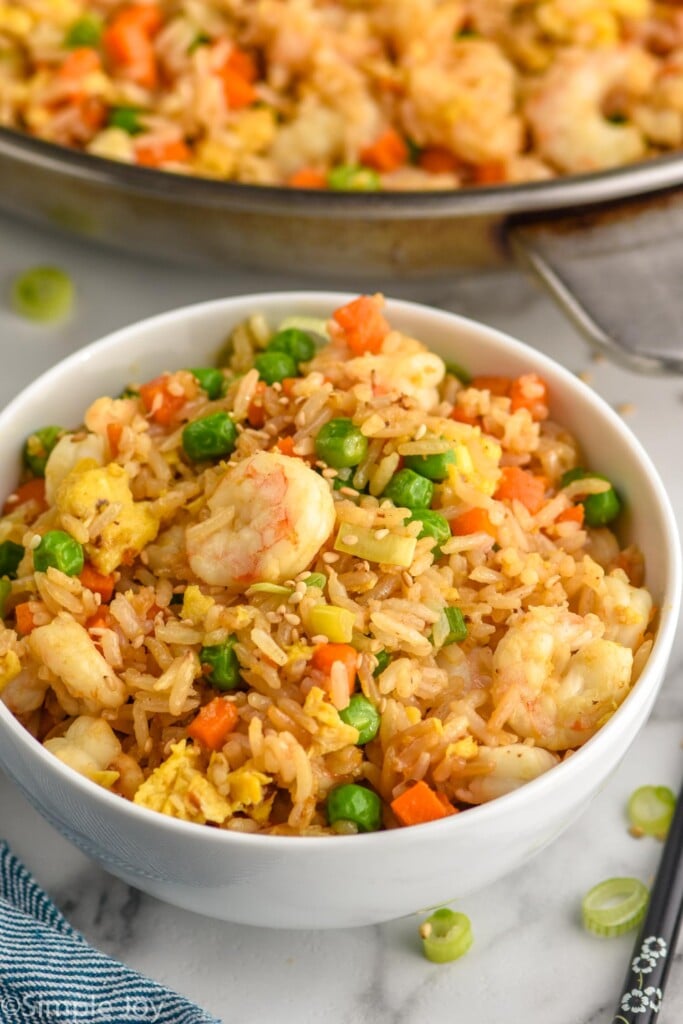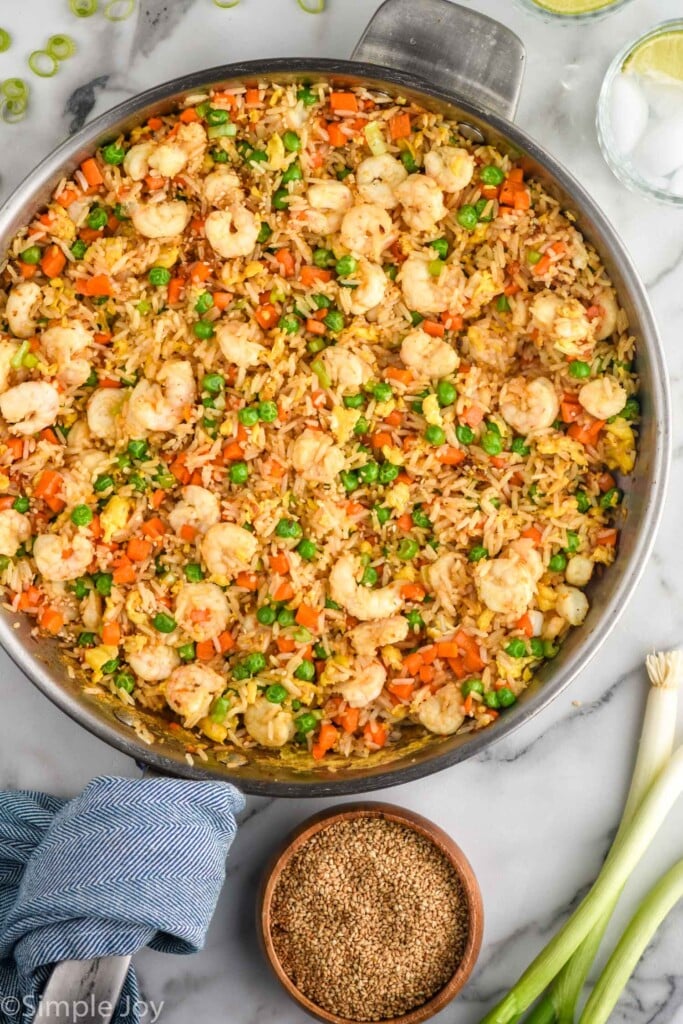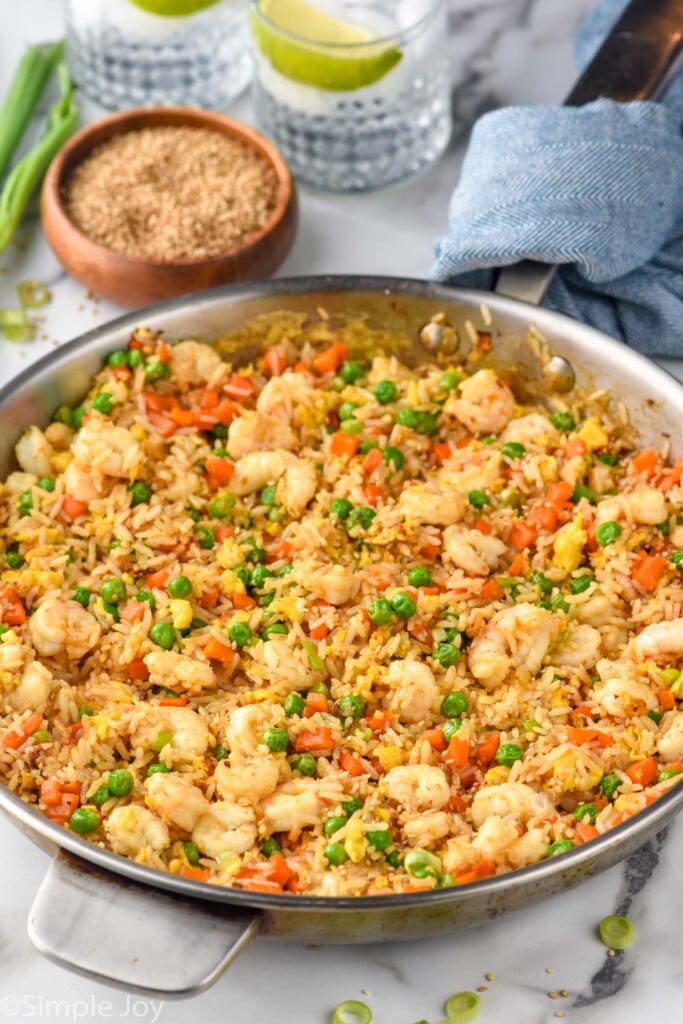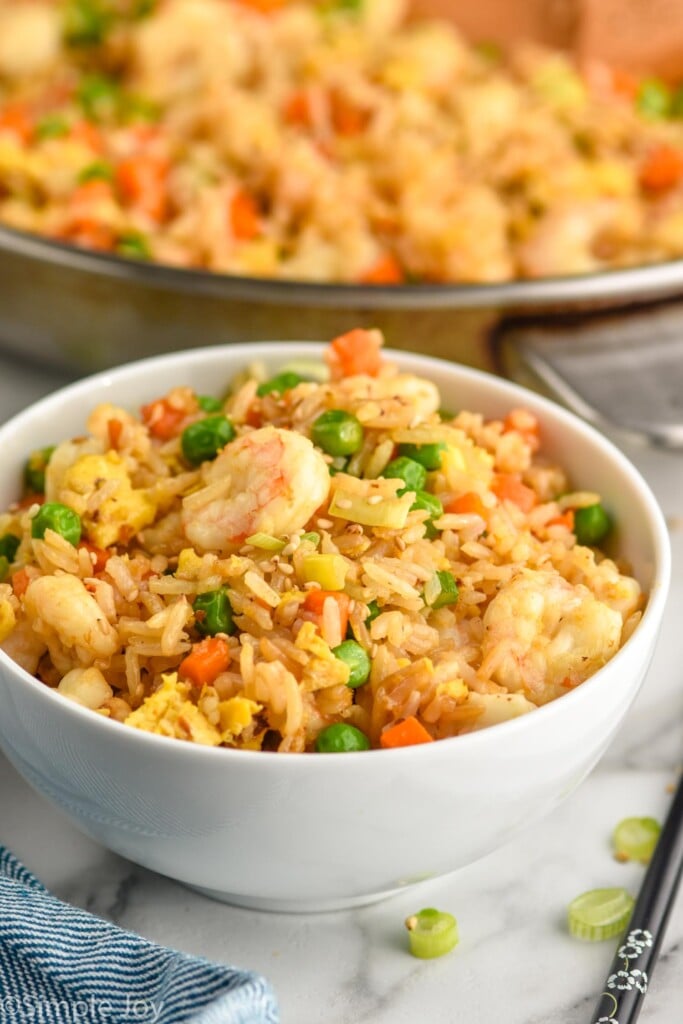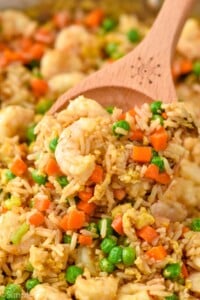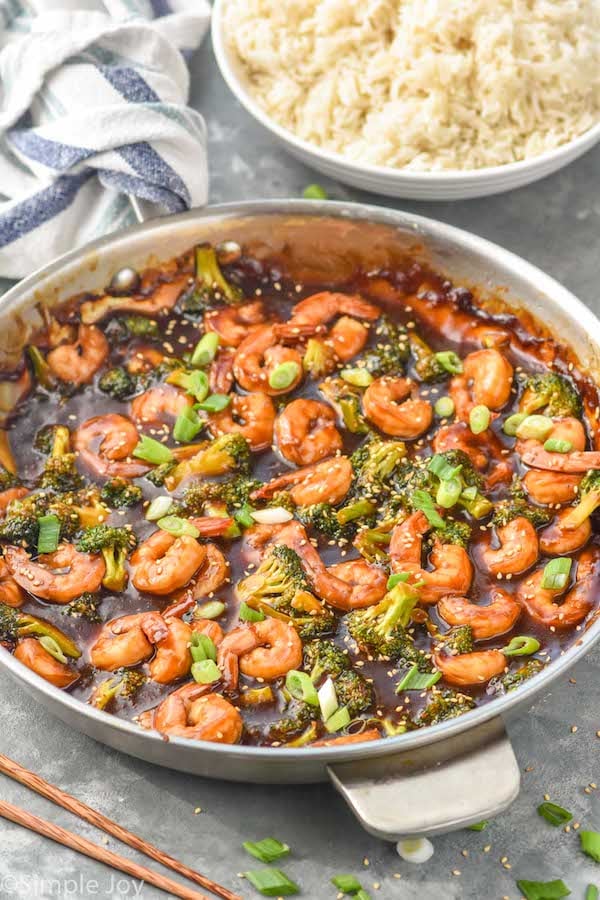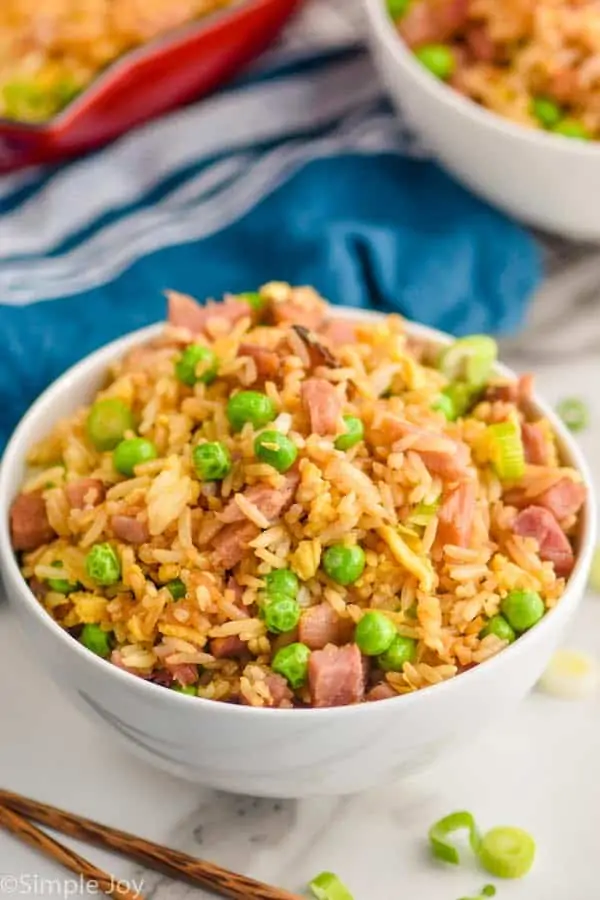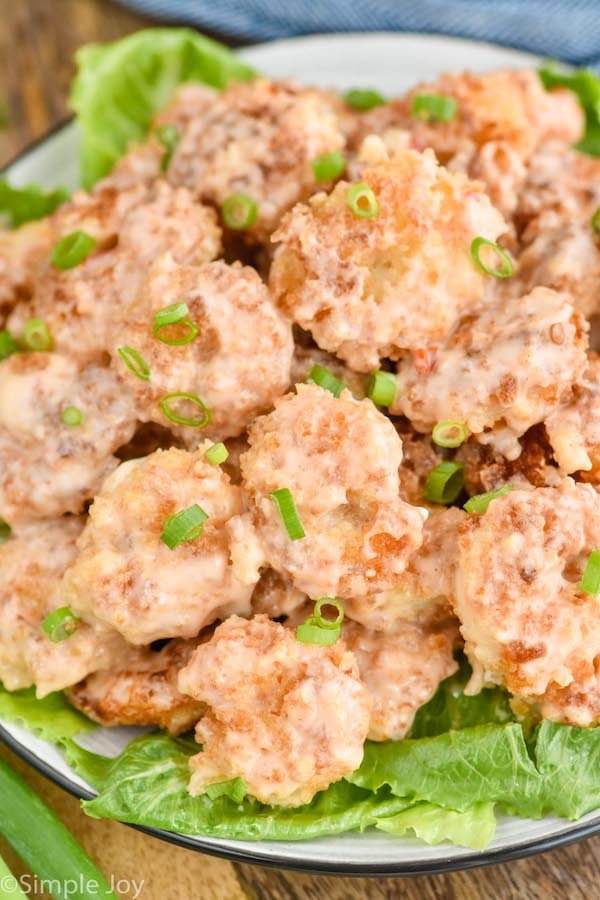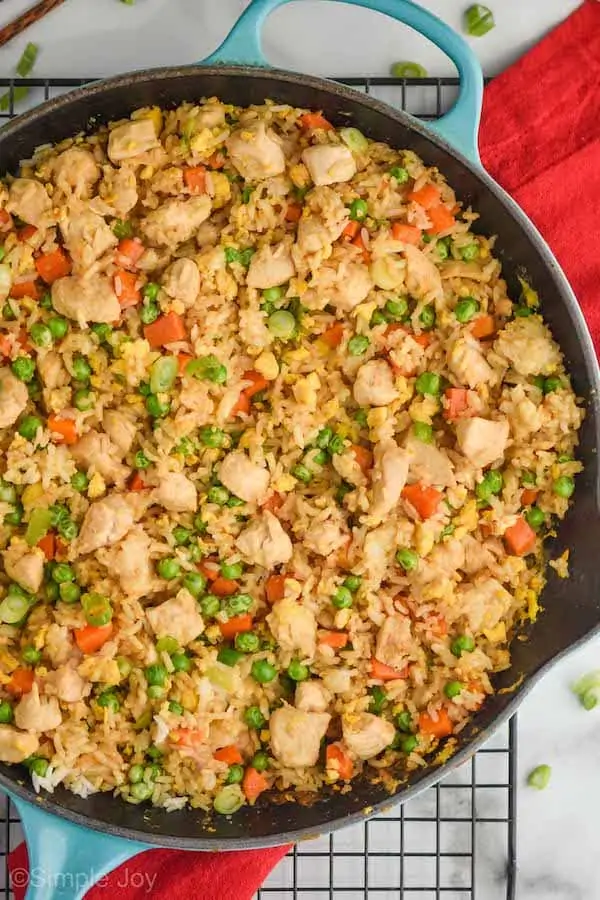Rinsing Rice Before Cooking
The best rice for fried rice is long grain white rice. To get four cups of cooked rice, you will start with about 1 1/3 cups of dry rice. My preference here is jasmine rice. We like to buy a big bag in bulk as we use it so often with our stir fry recipes. This homemade fried rice recipe is no different. It is delicious and comforting, but it comes together at home in under 30 minutes. Plus, I would dare say, that this is even better than the take-out that I grew up on. If you don’t have a wok, don’t worry. This very simple fried rice recipe comes together in a large skillet on the stovetop. This is a perfect recipe for a new cook, and with my video tutorial below, you are sure to master it.
Using Day Old Rice
It is important when making this recipe that you use rice that is either leftover from the day before, or that has been refrigerated for at least four hours. This allows the rice to cool and dry out slightly, which gives fried rice the perfect consistency. If you use fresh rice which is fluffy and soft, it will turn into a mushy mess.
Storing and Reheating Leftovers
If you have any leftover fried rice with shrimp, store it in an airtight container in the refrigerator for up to three days. Reheat only the portion you plan to eat on the stovetop or in the microwave. If it looks dry, add a splash of water.
Get raw frozen shrimp. Cooking the thawed raw shrimp in the sesame oil and garlic gives it a really nice flavor. If you buy frozen cooked shrimp, you will miss out on that addition, needing to stir in the thawed shrimp at the end with the rice. Factor the thawing time. When planning to use frozen shrimp in your recipe, be sure to factor in the thawing time. I often thaw my shrimp under cold running water, a process that typically takes around 15 minutes. It’s crucial to follow the instructions on the package for proper thawing. Plan ahead. For the safest and most controlled thawing process, place the bag of frozen shrimp in the refrigerator the night before you plan to make the recipe.
Have all ingredients ready to go. This includes chopping vegetables, deveining and peeling shrimp, and having the cooked and cooled rice ready. Stir-frying is a quick process, so having everything ready is key. Don’t thaw the peas. Since frozen peas are completely cooked, we add them right to the dish from frozen. They will warm just enough to thaw from the heat of the other ingredients. If you thaw them first, they will be too mushy.
Substitutions and Variations
Use other veggies. If your family doesn’t like peas, swap them out for diced bell peppers. Just sauté them in the oil in step 3 before you add in the rice. Make it lower in sodium. If you are following a low sodium diet, you can use low sodium soy sauce here. Keep in mind that low sodium soy sauce still contains a significant amount of sodium, so you will need to account for that with the rest of your diet for the day. Make it gluten free. Remember that soy sauce does contain gluten. To make this recipe gluten free, use a gluten free soy sauce or tamari. Skip the egg. If someone in your house has an allergy to eggs, simply leave them out and start the recipe on step 3.
